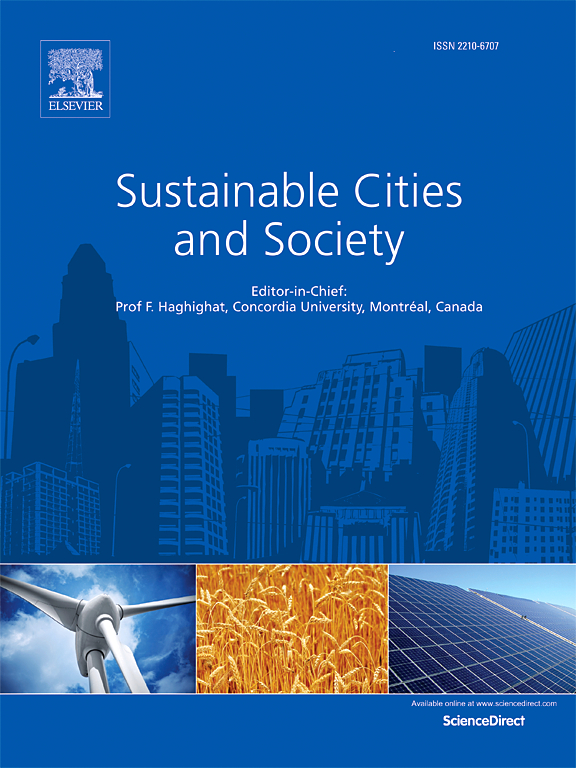Investigating the quantitative impact of the vegetation indices on the urban thermal comfort based on machine learning: A case study of the Qinhuai River Basin, China
IF 10.5
1区 工程技术
Q1 CONSTRUCTION & BUILDING TECHNOLOGY
引用次数: 0
Abstract
Rapid urbanization and economic development in China have reshaped land cover and impacted urban Thermal Comfort (TC). This study examines the relationship between Vegetation Indices (VIs) and TC in the Qianhai River Basin using multi-temporal remote sensing data and Machine Learning (ML) models. TC classifications were derived through inversion and analyzed using the standard deviation ellipse and Moran's I. This study uses Random Forest Regression (RFR) to evaluate the predictive performance of 14 vegetation indices. The results revealed that in 2022, high TC areas (917.52 km²) were mostly found in green areas, farmlands, and water bodies, while low TC areas were concentrated in urban and industrial zones. VIs such as the Normalized Difference Moisture Index (NDMI), Shortwave Infrared Vegetation Index (SWIRVI), and Global Environment Monitoring Index, which reflect vegetation moisture and growth, were key in characterizing TC. The study refines the mechanism of VIs on the scale of urban functional areas, which fills the deficiency of neglecting the differences of functional areas in previous studies. SWRWI and Vegetation Growth Period Index were more relevant in agricultural zones, whereas indices emphasizing impervious surfaces better represented TC in urban areas. Identifying the most impactful VIs provides valuable insights for developing targeted urban planning strategies.
求助全文
约1分钟内获得全文
求助全文
来源期刊

Sustainable Cities and Society
Social Sciences-Geography, Planning and Development
CiteScore
22.00
自引率
13.70%
发文量
810
审稿时长
27 days
期刊介绍:
Sustainable Cities and Society (SCS) is an international journal that focuses on fundamental and applied research to promote environmentally sustainable and socially resilient cities. The journal welcomes cross-cutting, multi-disciplinary research in various areas, including:
1. Smart cities and resilient environments;
2. Alternative/clean energy sources, energy distribution, distributed energy generation, and energy demand reduction/management;
3. Monitoring and improving air quality in built environment and cities (e.g., healthy built environment and air quality management);
4. Energy efficient, low/zero carbon, and green buildings/communities;
5. Climate change mitigation and adaptation in urban environments;
6. Green infrastructure and BMPs;
7. Environmental Footprint accounting and management;
8. Urban agriculture and forestry;
9. ICT, smart grid and intelligent infrastructure;
10. Urban design/planning, regulations, legislation, certification, economics, and policy;
11. Social aspects, impacts and resiliency of cities;
12. Behavior monitoring, analysis and change within urban communities;
13. Health monitoring and improvement;
14. Nexus issues related to sustainable cities and societies;
15. Smart city governance;
16. Decision Support Systems for trade-off and uncertainty analysis for improved management of cities and society;
17. Big data, machine learning, and artificial intelligence applications and case studies;
18. Critical infrastructure protection, including security, privacy, forensics, and reliability issues of cyber-physical systems.
19. Water footprint reduction and urban water distribution, harvesting, treatment, reuse and management;
20. Waste reduction and recycling;
21. Wastewater collection, treatment and recycling;
22. Smart, clean and healthy transportation systems and infrastructure;
 求助内容:
求助内容: 应助结果提醒方式:
应助结果提醒方式:


